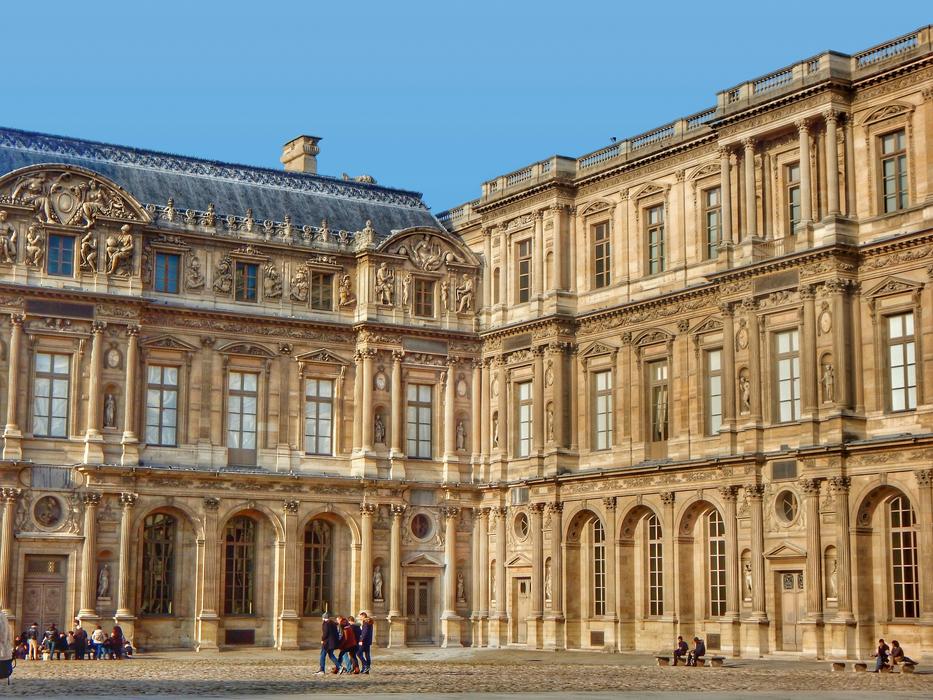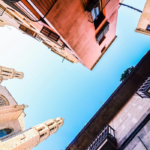Introduction to the Louvre Museum Guide
The Louvre Museum in Paris is a treasure trove of art and history, attracting millions of visitors each year. With its stunning architecture and an incredible collection of over 35,000 works of art, the Louvre stands as the largest art museum in the world. This comprehensive Louvre Museum guide will help you uncover hidden treasures and provide valuable visitor tips, ensuring your experience is as enriching as it is enjoyable. Whether you are an art aficionado or a casual traveler, this guide will equip you with everything you need to know before embarking on your journey through this iconic establishment.
History of the Louvre Museum
From Fortress to Art Museum
Originally built in the late 12th century as a fortress under King Philip II, the Louvre has undergone numerous transformations throughout its history. In the 16th century, it became a royal palace, and later, during the French Revolution, it was transformed into a public museum. The establishment of the Louvre as an art institution in 1793 marked the beginning of its journey to becoming a global symbol of culture and heritage.
Architectural Evolution
The architectural design of the Louvre reflects its rich history. The palace showcases a blend of Renaissance, classical, and modern styles. The iconic glass pyramid, designed by architect I.M. Pei, was inaugurated in 1989 and serves as the museum's main entrance. This striking contrast between the historic façade and contemporary design captures the essence of the Louvre—a place where the old coexists harmoniously with the new.
Understanding the Collections
Major Departments and Highlights
The Louvre Museum is divided into eight departments, each housing remarkable collections. Here’s a closer look at some of the most significant areas:
Paintings
The painting department is home to over 7,500 works of art, featuring masterpieces from renowned artists such as Leonardo da Vinci, Claude Monet, and Eugène Delacroix. The Mona Lisa, arguably the most famous painting in the world, draws visitors with her enigmatic smile. Other notable works include Liberty Leading the People and The Coronation of Napoleon.
Sculptures
The sculpture collection features over 6,000 pieces, ranging from ancient civilizations to the 19th century. Notable sculptures include the Venus de Milo and The Winged Victory of Samothrace, each embodying the beauty and artistry of their respective periods.
Antiquities
The museum is also known for its outstanding collection of ancient artifacts, including Egyptian, Greek, and Roman antiquities. One of the highlights is the Sphinx of Tanis, a captivating representation of the art and culture of ancient Egypt.
Temporary Exhibitions
The Louvre regularly hosts temporary exhibitions that showcase various themes, artists, and historical periods. These exhibitions offer fresh insights into the museum's collections and provide visitors with new perspectives on art.
Planning Your Visit
Opening Hours and Admission
Before you head to the Louvre, it’s essential to know the museum's opening hours. The museum is generally open every day from 9:00 AM to 6:00 PM, except on Tuesdays. Admission fees vary, but discounts are available for students, teachers, and youth under 26. Be sure to check the official website for the most current information and any special events.
Getting There
The Louvre Museum is centrally located in Paris, making it easily accessible by public transportation. The Palais Royal – Musée du Louvre metro station (Line 1) is the closest stop. Additionally, the museum is within walking distance from other popular attractions, such as the Tuileries Garden and the Musée de l'Orangerie.
Entrance and Layout
To avoid long queues, consider purchasing tickets online in advance. The Louvre's layout can be overwhelming due to its vast size, so it's advisable to familiarize yourself with an exhibition map before your visit. This will help you prioritize the artworks you wish to see and navigate more efficiently.
Visitor Tips for an Enriching Experience
Planning Your Route
With over 35,000 works of art, it’s impossible to see everything in one visit. Focus on a few sections that interest you most and plan your route accordingly. You can choose to explore specific themes, artists, or time periods. For example, a visit to the Italian Renaissance section will allow you to appreciate works by legends like Caravaggio and Raphael.
Guided Tours vs. Self-Guided Exploration
Consider whether you prefer a guided tour or a self-guided exploration. Guided tours often provide in-depth insights and stories behind the artworks, enhancing your understanding and appreciation. Alternatively, self-guided visits allow for a more personal pace, enabling you to linger at your favorite pieces.
Utilize Audio Guides
For those who opt for a self-guided experience, utilizing an audio guide can enrich your visit. These guides provide context, history, and interesting anecdotes about the artworks, enhancing your overall experience at the museum.
Take Breaks
The Louvre can be physically demanding due to its sheer size. Don’t forget to take breaks and recharge at one of the museum's cafés. Enjoying a coffee while contemplating the artworks can add to the overall enjoyment of your visit.
Photography Policies
While photography is allowed in most areas, using flash or tripods is prohibited. Be mindful of the museum’s regulations to ensure a pleasant experience for all visitors.
Dining and Shopping Options
Cafés and Restaurants
The Louvre offers several dining options ranging from casual cafés to fine dining. The Café Marly, situated with stunning views of the Pyramid, serves French cuisine and is a perfect spot to relax. For lighter bites, the Louvre Café provides a more casual atmosphere.
Museum Shops
Don’t forget to explore the museum shops, where you can find a wide selection of art-related books, souvenirs, and reproductions of famous artworks. These shops are ideal for picking up a memento of your visit.
Accessibility at the Louvre
The Louvre Museum is committed to accessibility, ensuring that all visitors can enjoy its collections. Wheelchair rentals are available, and the museum is equipped with elevators. Additionally, guided tours tailored for visitors with disabilities are offered, providing an inclusive experience.
Conclusion
Your journey through the Louvre Museum will undoubtedly be a memorable one, filled with awe-inspiring art and rich history. With this Louvre Museum guide, you are now well-equipped to uncover the treasures within its walls and make the most of your visit. From planning your route to enjoying the finest dining options, the Louvre offers an enchanting experience for every visitor.
Frequently Asked Questions (FAQ)
1. What can I expect from the Louvre Museum guide?
The Louvre Museum guide provides detailed information on the museum's history, collections, visiting tips, and more to enhance your experience.
2. How can I plan my visit using the Louvre Museum guide?
You can use the Louvre Museum guide to learn about opening hours, ticket options, and recommended routes to make your visit fulfilling.
3. What are the must-see artworks as mentioned in the Louvre Museum guide?
The Louvre Museum guide highlights must-see artworks such as the Mona Lisa, Venus de Milo, and The Winged Victory of Samothrace.
4. Are there dining options covered in the Louvre Museum guide?
Yes, the Louvre Museum guide includes information on various dining options available inside the museum for a convenient experience.
5. Is the Louvre Museum accessible for all visitors?
The Louvre Museum guide informs readers about accessibility options available, ensuring that all visitors have the chance to enjoy the museum's treasures.
For more information about planning your visit, consider checking out the official Louvre Museum website here.



